What's New
Displaying results 1881 - 1890 of 4899
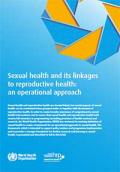
Resource | Publications,
Sexual health and reproductive health are closely linked, but crucial aspects of sexual health can be overlooked when grouped under or together with the domain of reproductive health. In order to create broader awareness of comprehensive sexual health interventions and to ensure that sexual health and reproductive health both receive full attention in programming (including provision of health services) and research, the World Health Organization (WHO) has reviewed its working definition of sexual health to create a framework for an operational approach to sexual health. The framework, which is intended to support policy-makers and programme implementers and to provide a stronger foundation for further research and learning in sexual health, is presented and described in full in this brief.
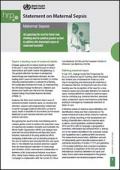
Resource | Publications,
In April 2016, WHO convened an expert consultation to discuss, develop and propose a new global definition for maternal sepsis. A multidisciplinary international panel of 48 experts was surveyed through an online and in-person consultation in March–April 2016 for their opinion on the new definition of sepsis proposed for the adult population and the importance of different criteria for identification of maternal sepsis. The new maternal sepsis definition reads as follows: maternal sepsis is a life-threatening condition defined as organ dysfunction resulting from infection during pregnancy, childbirth, post-abortion, or postpartum period.
The operationalization of the new maternal sepsis definition guides providers to focus on actionable elements such as the administration of antibiotics and fluids, and support of vital organ functions.
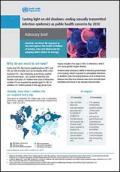
Resource | Publications,
Why do we need to act now? Some viral STIs, like human papillomavirus (HPV) and HIV, are still incurable and can be deadly, while some bacterial STIs – like chlamydia, gonorrhoea, syphilis and trichomoniasis – are curable if detected and treated. Each year, 357 million new cases of these four curable STIs are acquired by people aged 15–49. In addition, 417 million people in this age group have herpes simplex virus type 2 (HSV-2) infections, which can cause genital herpes disease. Antimicrobial resistance (AMR) to Neisseria gonorrhoeae is increasing, which may lead to untreatable infections. In addition, new menacing diseases such as Ebola virus disease and Zika virus disease have more recently been identified and found to be sexually transmissible.
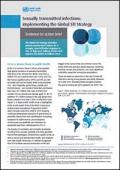
Resource | Publications,
In the 21st century, there is still an unacceptably high global incidence of sexually transmitted infections (STIs). Around the world, more than a million STIs are acquired every day. Some viral STIs, like human papillomavirus (HPV) and HIV, are still incurable and can be deadly, while some bacterial STIs – like chlamydia, gonorrhoea, syphilis and trichomoniasis – are curable if detected and treated.
The Global STI Strategy describes priority actions that countries can take as part of a stronger and more effective response to STIs, to help save millions of lives and improve the health of millions more. The range of actions includes strengthening data monitoring, STI prevention, early diagnosis, and patient and partner management, as well as initiating approaches to reach the most vulnerable populations.
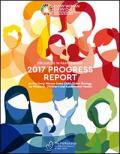
Resource | Publications,
Every Woman Every Child Global Strategy for Women’s, Children’s, and Adolescents’ Health is increasingly uniting stakeholders across sectors for collective advocacy and action. It has created a surge of support to ensure women, children and adolescents are at the heart of the SDGs. One year on, this inaugural Global Strategy progress report serves as a critical tool for alignment, advocacy and accountability.
This report showcases how multisectoral and multistakeholder partnerships are working across the life-course to ensure equitable access to quality and affordable care. Around the world, and across sectors, we are coming together to deliver together on a shared vision for, and of, women, children and adolescents as critical agents of change.
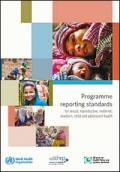
Resource | Guidelines,
Programme reporting standards (PRS) have been developed in the form of a checklist to guide the reporting of sexual, reproductive, maternal, newborn, child and adolescent health (SRMNCAH) programmes. The PRS checklist seeks to fill the gaps mentioned in the Introduction by providing a list of key reporting items related to the development, implementation, and monitoring and evaluation processes of SRMNCAH programmes. By focusing specifically on the systematic reporting of these processes, the PRS highlights lessons learnt in the field and helps to facilitate replication and scale-up.
This document presents version 1.0 of the PRS checklist and also provides an overview of the PRS and instructions on how to use it, including a detailed description of each section and item, and additional resources that can be used to support or complement the reporting process.
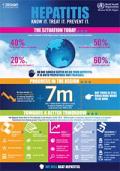
Resource | Infographics,
Infographic on hepatitis produced by WHO Regional Office for the Western Pacific.
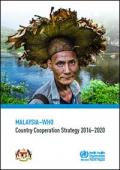
Resource | Publications,
The Malaysia–WHO Country Cooperation Strategy 2016–2020 will guide collaboration on health for the next five years between Malaysia and WHO.
The 2016-2020 strategy builds on previous strategies, with WHO assistance now increasingly focused on more specialized areas. The priorities identified reflect Malaysia's level of development and the significant capacity and resources that Malaysia has devoted to many aspects of health, particularly communicable disease control and maternal and child health. This strategy is the result of discussions between the Ministry of Health and WHO and includes input from other key development partners working in health.
The strategic priorities identified are also in line with two recent global WHO reforms, which are reflected in the cooperation strategy.
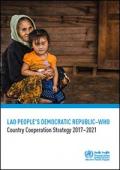
Resource | Publications,
The Ministry of Health of the Lao People’s Democratic Republic and the World Health Organization (WHO) are pleased to present the Lao People's Democratic Republic–WHO Country Cooperation Strategy 2017–2021. The strategy provides a blueprint for collaboration on health for the next five years between the Lao People's Democratic Republic and WHO.
Countries are changing and developing rapidly, as are the needs and expectations of their populations. The Lao health system has shown significant improvements, as evidenced by the achievement of most of the country's Millennium Development Goal targets.
The cooperation strategy was developed by leveraging these developments, in consultation with Government agencies, the United Nations system in the country and other multilateral health and development partners.
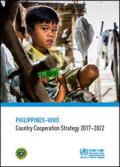
Resource | Publications,
The The Philippines–WHO Country Cooperation Strategy 2017–2022 spells out the country's shared vision for health: All for health towards health for all. This is the vision of the Philippine Health Agenda 2016–2022, with which this strategy is closely aligned.
The Philippines has made significant investments and advances in health in recent years. Rapid economic growth and strong country capacity have contributed to Filipinos living longer and healthier. However, all the benefits of this growth have not reached the most vulnerable groups, and the health system remains fragmented.
In the international arena, the Philippines has been an active Member State of WHO, and is the home of the WHO Regional Office for the Western Pacific. The country has played a critical role in shaping development agendas, including the Sustainable Development Goals (SDGs). In the spirit of the SDGs, this country cooperation strategy focuses on leaving no one behind and enhancing collaboration for health to move the Philippines closer to universal health coverage. The work of WHO and the Department of Health will focus on five strategic priorities: saving lives, promoting well-being, protecting health, optimizing the health architecture and using platforms for health.





